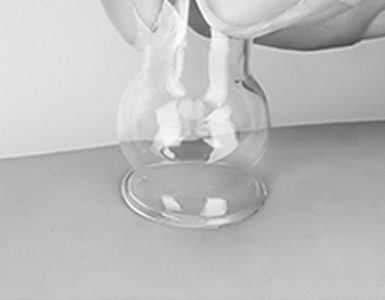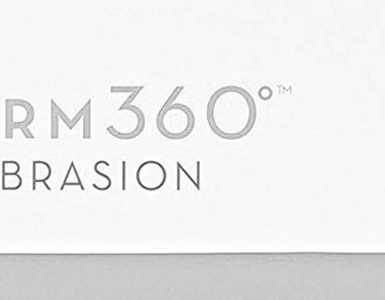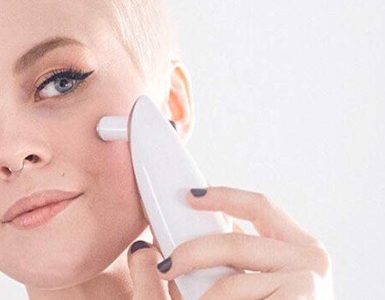The microdermabrasion we know today is well known and has been practiced for three decades. Initially, small crystals of aluminum oxide were used to exfoliate the skin. But people are beginning to worry about the harmful effects of inhaled particles and started looking for alternative solutions. This leads to the development and introduction of diamond microdermabrasion. Microdermabrasion is a non-invasive and painless procedure and does not require interruption of your daily routine. After completing an entire session of therapy, you can immediately resume your daily commitments.
Microdermabrasion is a non-surgical method of rejuvenating the skin by mechanical exfoliation of the superficial layer, without chemicals or laser. This is a modern and painless alternative to traditional chemical or laser exfoliation. A quick and convenient way to restore and even out your facial skin.
Microdermabrasion is a fast, easy and effective form of exfoliation for all skin types and colors, without causing pain or discomfort. It eliminates unnecessary dead cells from the surface of the skin, stimulating the production of new healthy cells. This procedure reduces fine lines and wrinkles, age spots, scars, stretch marks and polishes the skin. Elastin production is also stimulated, resulting in firmer, more vibrant and supple skin appearance.

Types of microdermabrasion
There are two types of microdermabrasion – diamond and crystal, which differ in their nature. Here is a little more information about their individual characteristics and performance.
- Crystal microdermabrasion – it is used to reduce facial scars and pigment spots on the skin surface as well as for exfoliation. This procedure launches small crystals that cleanse the skin in depth. At the same time, a gentle vacuum is used to remove the dead cells from the epidermis. It should be noted that the popularity of this method is decreasing due to the fact that there are often leftover crystals on the skin surface after the procedure, which are difficult to remove and clean up.
- Diamond Microdermabrasion – This procedure uses a specific diamond tip tool, which is where the name of this therapy comes from. It successfully and accurately reaches areas, close to the eyes and mouth, as there is no risk of getting fine crystal particles into your eyes or nose and being ingested. There are different diamond heads (with different coarseness) and you can choose the one that feels most comfortable, according to your skin type and the depth of the resurfacing you’d like to obtain. The procedure helps to remove the dead cells as well as to refresh the skin or to erase/reduce acne scars on the face. All the dead cells and contaminants are then vacuumed back into a waste filter.
What makes microdermabrasion so beneficial?
Every 28 days the skin changes its surface layer. The new cells push the old, dead cells and they settle on the skin’s superficial layer. This causes enlarged and clogged pores and uneven texture.
As the years go by, this process of rejuvenation slows down and your skin ages and loses its natural glow because newer skin cells form much slower than before. They struggle to replace the dead ones, this is why the skin becomes dull and starts losing its youthful appearance.
Microdermabrasion procedures are beneficial because they uncover the newly formed skin cells and remove the older ones.
When is microdermabrasion recommended?
Microdermabrasion is recommended for both men and women, for young (over 16 years) and more mature skin, of all types and colors, if your skin is aging, tired, imperfect, dry, devitalized, thick, problematic, damaged by the sun and you want to restore its youthful and fresh appearance again.
But microdermabrasion appears to be even more beneficial if your goals are:
- To rejuvenate sun-damaged skin on face, neck, shoulders, back, arms and legs
- To reduce the appearance of age spots
- To even out your complexion
- To get rid of acne and superficial scars from past traumas
- To keep acne and blackheads under control
- To reduce stretch marks
- To improve overall skin health
Diamond microdermabrasion prevents clogging of pores and early signs of aging. Following the procedures, the skin more effectively adopts the anti-aging and anti-acne cosmetics applied to it.
Most often the face and neck areas are treated. But if you have your own MDA machine, you can perform microdermabrasion to other parts of your body – breasts, shoulders, back, arms, knees, and elbows.
How is the procedure performed?
The tip of the applicator runs over the skin surface and creates a gentle vacuum. The diamond tip gently exfoliates about 20-25 microns from the superficial layer of the skin. After the dead cells are removed, the fresher and younger skin underneath is revealed. Microdermabrasion equals the activity of 30% glycol peels and 70% peels. According to recent studies, there is a 45% increased skin thickness after microdermabrasion procedures. The skin is stimulated for a more active and effective self-regeneration.
How many procedures do you need?
This kind of cosmetic procedure has a progressive effect without being too aggressive for the skin. A visible result can be obtained even after the first microderm treatment. Usually, the procedures are performed every four weeks, but more if you have your own device, you can treat your skin as often as once a week.
The traditional number of procedures required until you can obtain an optimal effect is six. Thereafter, the beautiful skin appearance is maintained periodically every three months or as needed.
It usually takes 20-40 minutes depending on where it is applied.
When is microdermabrasion not recommended?
Microderm treatment is not recommended if you have recently had shingles, warts, active rosacea, auto-immune diseases, have recently undergone laser surgery, have started treatment with Retin A, have been undergoing medium or deep chemical peeling, if you are prone to hyperpigmentation. Also, if you have active eczema, dermatitis, psoriasis, vascular lesions, “capillary ruptures” if you are HIV or hepatitis B or C positive, and also if you have a bleeding disorder.
Remember to tell your doctor about any allergies, a history of sensitive skin, eczema, lupus, or another autoimmune disease, about current medicines you are taking, or you have problems related to sun sensitivity.
What are the benefits of microdermabrasion before other modern cosmetic procedures?
One of the biggest advantages is the fact that as soon as the procedure is completed, the patient can return to his or her normal daily activities. Unlike some other skin treatments, your skin does not swell and you do not need to be absent from work. Microdermabrasion is becoming the preferred procedure for people who do not want to change their daily rhythm and take care of their beauty effectively and regularly. You can safely perform the procedure during your lunch break or at your home – whenever you’d like.
What happens after the procedure?
Some of the possible side effects include:
- Slight tingling and firming of the skin, the sensation resembles an exposure to strong wind or sun
- It is possible to observe slight redness that disappears within 12-24 hours
- The skin can be dry and flaky, which is a sign of the self-healing process. Use moisturizers as often as possible to reduce the flaking
One week after the procedure, you should avoid: electrolysis, waxing, depilatories, masks, various glycol or milk therapies or dermabrasion, tretinoin (vitamins A) and glycolic acids application.
Avoid direct exposure to the sun, sauna, hot tubs, jacuzzi, and solarium. The daily use of SPF25 is recommended, a higher factor or a combination of UVA and UVB protection, to prevent possible hyperpigmentation.
If you are planning botox injections or laser hair removal, it is recommended that you wait 24 hours after performing microdermabrasion. It is also important not to exercise 24 hours after the procedure, as sweating causes irritation, which can last up to several hours. Excessive swelling or pain should be avoided as infection may occur if your skin is highly sensitive to such treatments.





Add comment